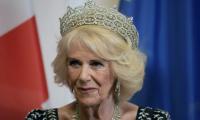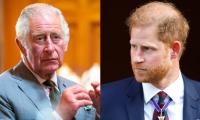When they sat together on a Mansoora table in Lahore on Tuesday, the religious leaders of Pakistan had women on their mind. They deliberated on the Punjab Protection of Women against Violence Act and demanded that the law be withdrawn before March 27; otherwise, they would launch a nation-wide movement against the government.
Times have certainly changed, but there are intimations of the massive agitation that was mounted against Zulfikar Ali Bhutto in 1977. The Pakistan National Alliance (PNA) movement was largely religiously motivated. Its slogan was the establishment of the Nizam-e-Mustafa, though political parties were also a part of the nine-party alliance.
And the irony is that Nawaz Sharif, though he had not yet emerged on the political horizon in 1977, would spiritually have belonged to that Islamist group. After all, his was the most prominent face in another Islamist alliance (an electoral one this time) that was formed in 1988 to confront Z A Bhutto’s daughter Benazir. The Islami Jamhoori Ittehad (IJI) also had nine parties. Throughout his political career, Nawaz Sharif has basked in the glory of conservative, even Islamist politics.
Now, however, the religious parties have ganged up against their former ally. Is this an omen of some kind, indicating a shift in the ideological alignments of our political parties? Can we hope that the veto power that clerics had held over our politics is about to be curtailed?
We need to look carefully at this emerging confrontation between the government and a united front of the religious groups in the context of the ongoing campaign against terrorism and extremism. This means that we can safely set aside an analogy between the PNA movement and the present stirrings. No mainstream political party is marching with the clerics and the establishment has obviously not nudged them into this defiance.
While the immediate provocation is the ‘un-Islamic’ law on women’s rights, it is instructive to scan the joint declaration that was approved by around 30 religious outfits. There has been some discussion lately about a shift in the government’s ideological sense of direction. First, the prime minister invoked a ‘liberal’ vision of Pakistan. Then, Mumtaz Qadri was executed. There have been some other signs of this shift.
The declaration said that “the religious leadership stands united to safeguard Namoos-e-Risalat and the Muslim family system”. It is interesting that these religious parties are not ashamed to insist that the measures taken by the government that they deem to be secular and liberal in nature “are a revolt against the constitution and betrayal of the founding fathers of the country”.
Imagine in your mind the sight of the leaders that represent the entire spectrum of our religious constituency and ask yourselves if they could be the successors of the founding fathers of Pakistan. This, in a way, is a more sinister usurpation of what they call the ideology of Pakistan than any military intervention or imposition of martial law. This is one measure of how we, in a collective sense, relate to our history. This confusion has left us wandering in the wilderness.
According to published reports, Jamaat-e-Islami chief Sirajul Haq, who presided over the meeting, said that “the women protection law is an attack on the Muslim family system and the rulers have been tasked to break it”. He argued that along with such measures as the execution of Mumtaz Qadri, the law was part of an international agenda and proved that the West had unleashed a cultural attack on the Muslim world.
There is no denying that Pakistani society is very vulnerable to religions passions. Even when the Islamists are unable to win an electoral majority, their capacity to mobilise the streets on an emotional issue is considerable. Besides, this power becomes larger than what it actually is when the government loses its nerve or when some high functionaries play a collaborative role. That is how a Lal Masjid becomes possible.
Have things changed since the Army Public School in Peshawar to an extent that the government can take on the clerics this time? The very reasons that the religious alliance has given for its exasperation are justification for not moving back. And if this is the resolve of the authorities, they should be grateful to the religious leaders for getting together and setting the stage for a decisive encounter.
But we cannot be sure that Nawaz Sharif’s administration would be able to muster the courage of its convictions. It is difficult to visualise a change of heart of such proportions in a short time. The PML-N, after all, has always been a right of centre, conservative party, and its affiliations with the militants in southern Punjab have been widely suspected.
So, why did Nawaz Sharif step out of this shadow in November last year to perceive Pakistan’s future in a ‘liberal’ and democratic dispensation? Why was he so enthusiastic in applauding the Oscar awarded to Sharmeen Obaild-Chinoy’s short documentary on honour killing, when the Islamists were condemning it as a Western conspiracy to damage Pakistan’s image? How did he find the courage to execute Mumtaz Qadri? And how was the landmark women’s rights law possible in Punjab?
It seems rational to believe that this is a new game plan, devised in collaboration with the military establishment. The logic for this shift has been present for a long time. It would be a national tragedy if these initiatives were abandoned prematurely. Incidentally, the religious leaders also expressed their concern that the rulers were keen to improve ties with India. There has been some good news on that front too, and this process should also be protected.
The fact that the law to protect women against violence has become the rallying point for all factions of Islamists and radicals, as well as moderates, is understandable. They resist the emancipation of women with full force. They know that the education of little girls and the freedom of women will effectively obliterate their kingdom of fear and obscurantism. It is for this reason that they so venomously disparage Western values and ideas. One reason for Islamophobia in Western countries, apart from violent extremism, is the status of women in Muslim countries.
I read an article about a prominent French intellectual, Alain Finkielkraut, in The New York Times who argues that Islam and the French society are incompatible. He is obviously an anti-Muslim rightist. But I think that he has a point when he says that the main problem is the oppression of women in Muslim culture. “We’ve got to help the Muslims resolve this question”, he said. In Pakistan, we should not need anyone’s help to liberate our women.
The writer is a staff member.
Email: ghazi_salahuddin@hotmail.com
Beijing was among first to denounce the tariffs, calling them “unjustifiable” and vowing strong countermeasures
With this unprecedented buildup, Diego Garcia has transformed into ticking time bomb of apocalyptic power
Pakistan is among world’s most climate-vulnerable nations, despite contributing minimally to global emissions
‘Azazeel’ is perhaps the most controversial novel to come out in Egypt this century
Dr Haroon Ahmed was an exceptional person, a precious human being who strived, throughout his long life
Pakistan can't afford another status quo budget so it must be budget of imagination, risk-taking and system-level...







